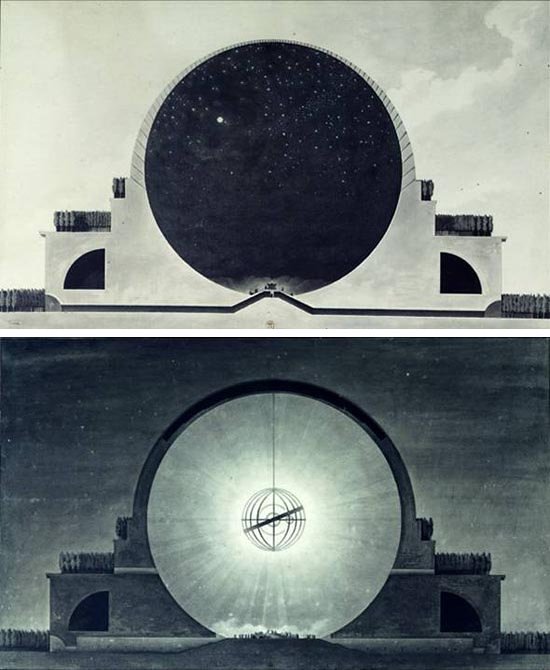
In 1784, French architect Étienne-Louis Boullée proposed building an enormous cenotaph for Isaac Newton, a cypress-fringed globe 500 feet high. A sarcophagus would rest on a raised catafalque at the bottom of the sphere; by day light would enter through holes pierced in the globe, simulating starlight, and at night a lamp hung in the center would represent the sun.
“I want to situate Newton in the sky,” Boullée wrote. “Sublime mind! Vast and profound genius! Divine being! Newton! Accept the homage of my weak talents. … O Newton! … I conceive the idea of surrounding thee with thy discovery, and thus, somehow, surrounding thee with thyself.”
As far as I can tell, this is unrelated to Thomas Steele’s proposal to enshrine Newton’s house under a stone globe, which came 41 years later. Apparently Newton just inspired globes.
